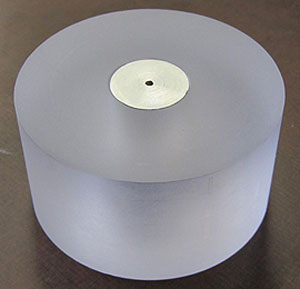A simple way to cloak objects at microwave frequencies to improve transmission
October 8, 2012
A metal object can be made invisible to to electromagnetic radiation at microwave frequencies by approximately 70 per cent with the help of ordinary plastic, Aalto University researchers have shown.
In practical terms, this means that electromagnetic waves travelling, for example, between two antennas, do not detect an object located in their path, allowing the waves to travel the distance between them despite the obstacle, without any disruption to communications.
The limit to the size of an object that can be rendered invisible to electromagnetic radiation at microwave frequencies was ten centimeters and the diameter of the tested metal cylinder was two centimeters in their experiment.
Previously, a similar effect required using complex devices or expensive metamaterials with the right electromagnetic response. In contrast, the method developed by Pekka Alitalo and Constantinos Valagiannopoulos is simple and affordable.
Plastic decreases electromagnetic scattering
Pekka Alitalo explains that objects are visible because they scatter light, which is electromagnetic radiation. A metal object will not, however, scatter electromagnetic radiation at microwave frequencies to the same extent when covered with a dielectric material — an insulator that does not conduct electricity. One such dielectric material is the ordinary plastic used by Alitalo and Valagiannopoulos.
“Because of space limitations, often something has to be placed in front of an antenna, such as a support structure or another antenna, and the radiation transmitted by the antenna cannot then travel through the object. We were especially interested in cloaking metal objects, as metal is a material that causes strong scattering and as such, greatly interferes with communications,” Alitalo explains.
